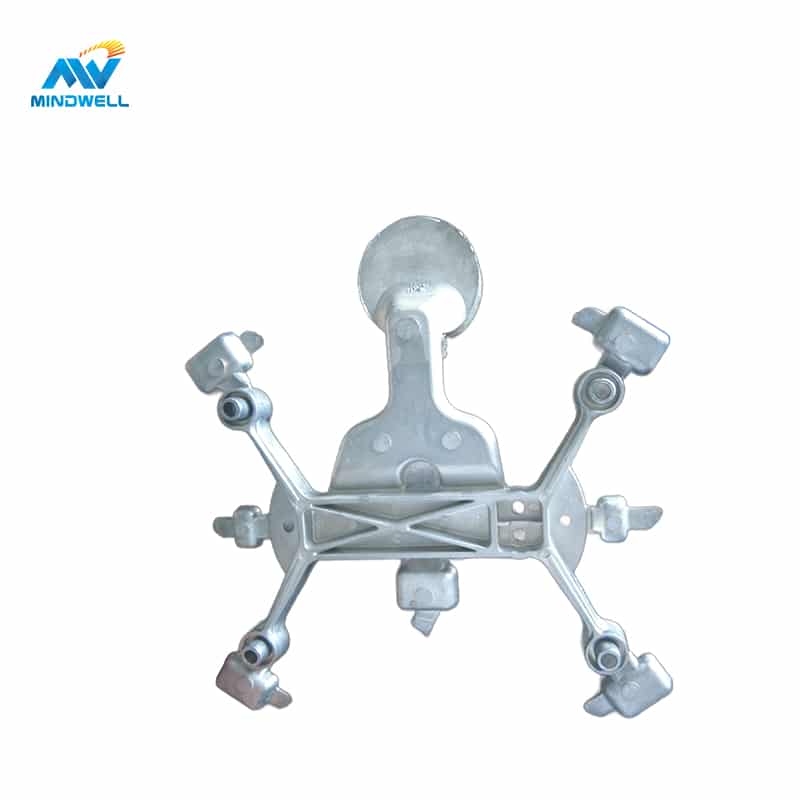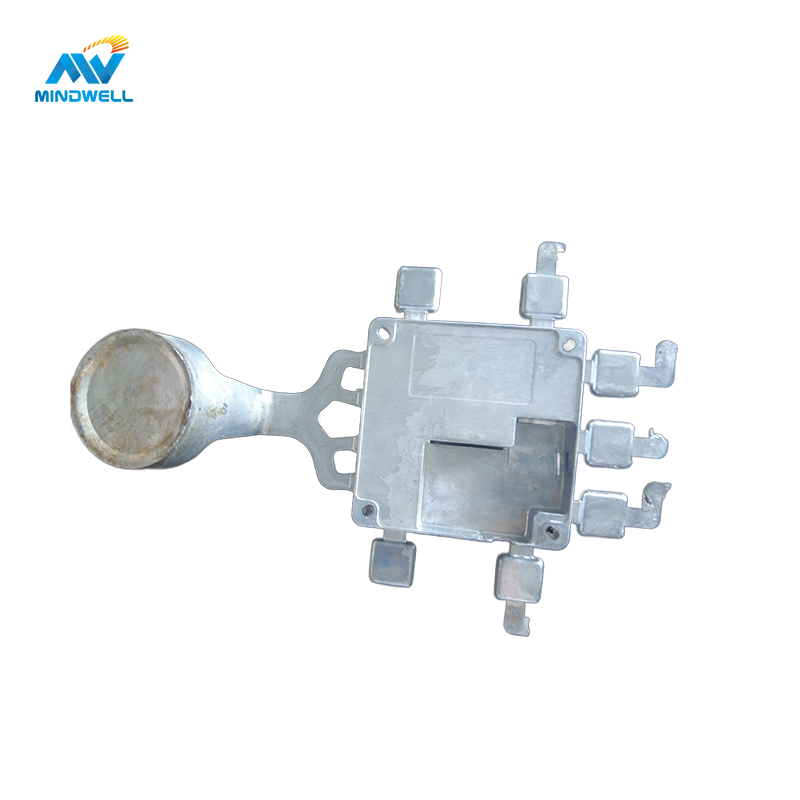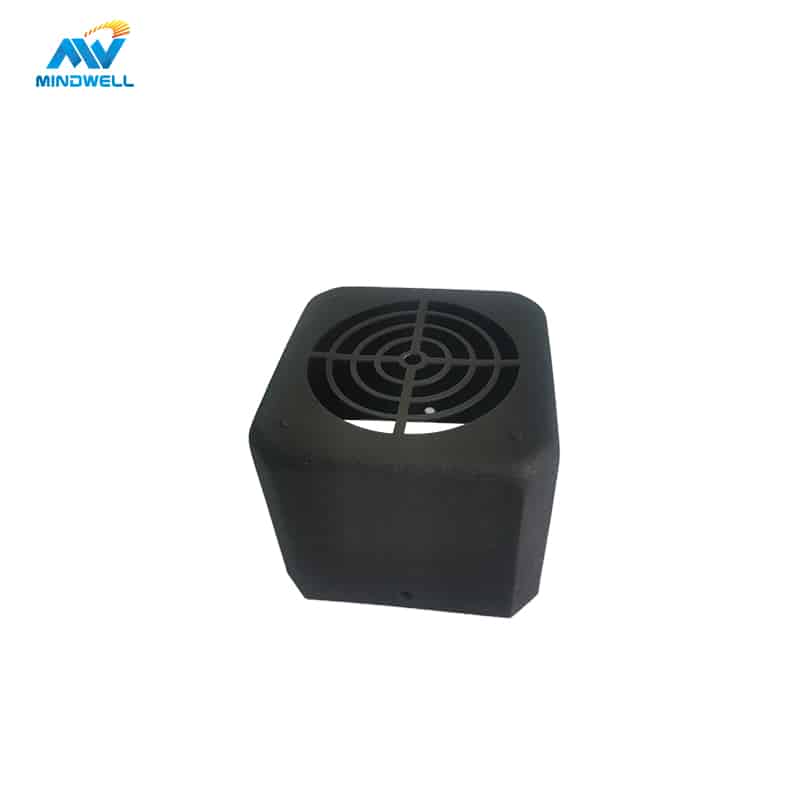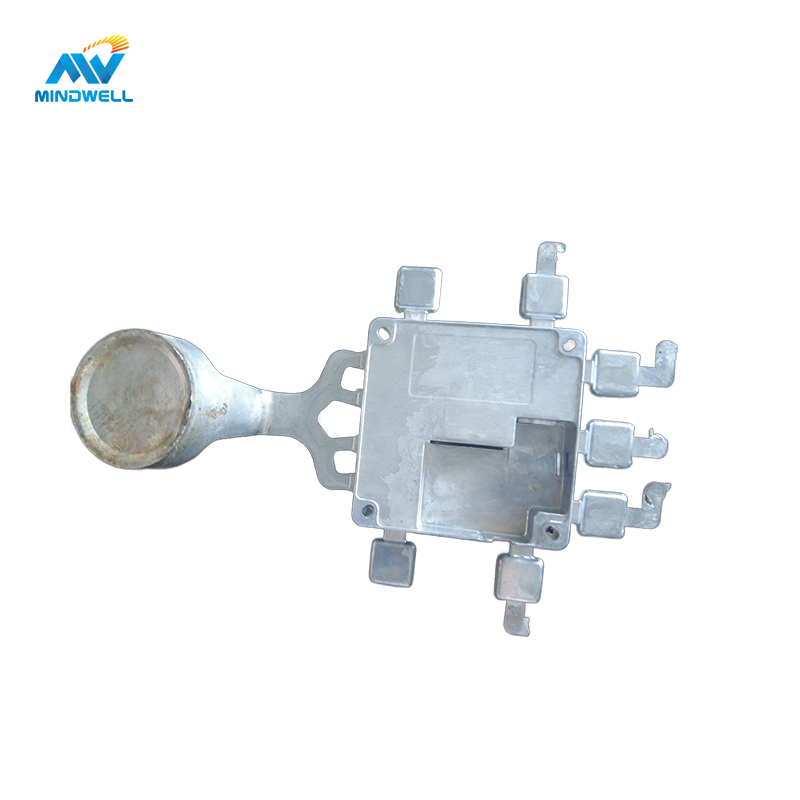低圧ダイカストは、アルミニウム合金ダイカストで一般的に使用されるダイカストプロセスの1つです。アルミ合金ダイカストと比較して 高圧ダイカスト低コストで大きな部品を製造できるという特徴がある。において 低圧ダイカスト低圧ダイカストの技術をマスターしないと、不具合が発生します。低圧ダイカストで発生する9大欠陥とその防止策を見てみましょう。
ストマータ
1.特徴
(1) 気孔
鋳物内部のガスによって形成される気孔型の欠陥。その表面は一般に平滑で、主に洋ナシ形、円形または楕円形をしている。一般に鋳物の表面には露出せず、大きな孔はしばしば孤立して存在し、小さな孔は集団で現れる。
(2) 皮下気孔
鋳肌の下にある分散気孔。溶湯と砂型(鋳型、湿中子、塗型、表面が汚れたチルド鋳鉄)との化学反応によって生じる反応性気孔。形状は針状、オタマジャクシ状、球状、洋ナシ状など。大きさや深さは様々。通常、機械加工や熱処理後に見られる。
(3) エアポケット(エアピット表面の孔)
鋳物の表面には、より滑らかな空気孔が凹んでいる。
(4) 空気収縮空洞
分散気孔、引け巣、引け巣の組み合わせによって形成されるキャビティ鋳造欠陥。
(5) ピンホール
一般に、鋳物の断面に分布する針状の大きさの析出気孔のことである。このような気孔はアルミニウム合金鋳物にしばしば発生し、鋳物の性能に非常に有害である。
- 点状のピンホール:この種のピンホールは、低倍率の微細構造では点状であり、輪郭が明瞭で、つながっていない。1平方センチメートルあたりのピンホールの数を数え、ピンホールの直径を測定することができる。このタイプのピンホールは、収縮空洞や収縮空隙と容易に区別できる。点状ピンホールは、鋳物の凝固中に析出する気泡によって形成され、ZL102合金鋳物のように晶出温度範囲が小さく、供給能力の高い鋳物に多く発生する。凝固速度が速い場合、共晶組成から離れたZL105合金鋳物にも点状のピンホールが発生する。
- 網目状のピンホール:この種のピンホールは、低倍率のミクロ組織で網目状に密に連なり、少数の大きな孔を伴っており、ピンホールの数を数えることは困難で、ピンホールの直径を測定することは困難であり、しばしば端部を有し、一般に「フライフィート」として知られている。晶出温度が広い合金の場合、鋳造の緩慢な凝固中に析出したガスは、粒界や発達したデンドライトの隙間に分布する。メッシュのピンホール。
- 混合ピンホール:この種のピンホールは、ドットピンホールとメッシュピンホールが混在しており、複雑な構造や不均一な肉厚を持つ鋳造品によく見られます。ピンホールは国家規格によって等級分けされる。等級が悪いほど、鋳物の機械的特性が低下し、耐食性と表面品質が悪くなります。鋳物の技術的条件によって許容されるピンホールレベルに達しない場合、鋳物はスクラップとなり、メッシュピンホールは合金マトリックスを裂き、ポイントピンホールよりも有害です。
(6) 表面のピンホール
鋳物の表面に集団で分布する散在気孔。その特徴と原因は皮下気孔と同じで、通常鋳物の表面に露出しており、1~2mmの機械加工で除去できる。
(7) チョークファイア(チョークホール)
注湯時に発生する多量のガスが円滑に排出されず、溶湯中で沸騰が発生し、鋳物内に多数の気孔が発生し、さらには不完全鋳造欠陥が発生する。
2.気孔の分類
(1) 析出孔
この種の気孔は、ゲート、ライザー、ホットジョイントなどの近くの高温領域に均等に分布している。気孔は小さく散在し、収縮空洞と共存することが多い。析出:すなわち、アルミニウム水にガスが含まれており、凝固過程で完全に除去されずに析出する。
(2) 反応性細孔
このような気孔は、鋳型壁と鋳物との接触面に均一に分布している。気孔の表面は平滑で、銀白色(鋳鋼)、金属光沢または暗色である。反応:鋳型、中子、コールドアイアン、塗料などには、アルミニウム水と反応してガスを発生する物質が含まれている。
(3) 侵入性気孔
これらの孔は鋳物の上部に分布し、孔は大きく滑らかである。侵入:キャビティ内のガスが鋳型外に排出されずに鋳物内に侵入すること。
3.気孔形成メカニズム
低圧鋳造の鋳型は基本的に密閉されており、溶融金属が鋳型を満たすスピードが速く、ガスが排出される時間がないため、袋が鋳物に孔やピンホールを形成する。
- 溶湯中の溶存ガスの析出孔(ピンホール)、金属の溶解中に含まれるガス、液体金属が冷却され、凝固するとき、ガスの溶解度の低下によりガスが析出し、それを除去するのが遅すぎるため、鋳物に孔が生じる。アルミニウム溶湯中のガスは介在物が多く、精錬効果が低く、鋳物の凝固速度が遅い。
- 濡れた中子、塗料、表面の汚れた冷鉄、注湯・加熱後に発生するガス - 反応性気孔(皮下気孔)、鋳型壁材と液体金属または液体金属内部の化学反応によって生成される気孔。
- キャビティ内のガスの鋳型外への排出が間に合わない・・・鋳型や中子の排気不良など、鋳造工程設計に無理がある場合や、不注意な操作による侵入孔(単発の大きな孔)、注湯時にガス孔がふさがれる(注湯速度が速すぎる)と、キャビティ内のガスが鋳物内に滞留して発生する。
4.予防策
製錬作業規則を厳守し、金属液の吸入を避け、注意深くガス抜きを行う。滲出気孔の防止
- 金属原料やリサイクル材は、乾燥していて、錆や油などがなく、使用前に予熱しておく必要がある。
- 溶融温度は高すぎてはならない。溶湯の溶融温度が高ければ高いほど、溶湯中に溶け込むガス(主に水素)が多くなる。したがって、特に非鉄合金の場合は、溶解温度を厳密に管理する必要がある。
- どのような種類の金属であれ、製錬時間が長 すぎて液体金属のガス吸収が増加する場合には、 できるだけ製錬時間を短縮すべきである。ある工場では、アルミニウム-鉄-マンガンの黄銅鋳物を生産しているが、この鋳物は2時間半で溶解・放冷される。気密性はすべて適格である。しかし、同じ工程を前提に、溶解して炉から出して6時間後に注湯した鋳物は、気密性が適格でないためにすべてスクラップになってしまう。溶解時間を元に戻すと、鋳物の気密性はすべて適格となり、溶解時間の長さが鋳物の気密性に及ぼす影響を十分に示している。
- アルミニウムを含む合金は、できるだけ電力周波数炉で製錬すべきではない。この炉の攪拌能力は極めて強く、アルミニウムは空気と接触すると容易にAl2O3に酸化され、液体金属に入ってスラグとなり、ガスの析出源にもなるからである。チャンスである。同時にH2Oとも反応しやすいので、液体金属は水素H2を吸収することができる。抵抗式反射炉、遠赤外線加熱炉、あるいは油やガスを使った反射炉を使えば製錬できる。これらの炉で製錬されたアルミニウム合金は、ガスの含有量が少なく、不純物が少ないことが、実践によって証明されている。
- 材料を投入する際は、融点の低い材料から投入し、次に融点の高い材料を投入する。そうすることで、金属がガスを吸収する量が少なくなり、装入物と空気の接触面積と接触時間が短くなるからである。
- 液体金属を脱ガスした後は、スラグを直ちに取り除いてから注湯し、再呼吸を防ぐために長時間滞留させてはならない。
- ヘキサクロロエタンまたはアルゴンによる精製脱ガスまたは真空脱ガス。
(2) コーティング、砂中子、金型(中子)等のガス発生を最小限に抑える。ガス発生量の少ない良質なコーティング剤を選択し、金型や中子のコーティング剤を十分に乾燥させる。反応性気孔の防止
- 塗料の種類を適切に選択し、塗料のガス発生量が高くならないようにする。塗料にもある程度のアウトガスがある。
- スプレー後は塗料を拭き取らないでください。塗料が落ちたところは、すぐにスプレーしてください。
- 金型と中子をまず予熱し、その後塗料をスプレーし、完全に焼き付けてから使用する。
- 砂中子は十分に乾燥させてから使用すること。
- 金属タイプやコールドアイロンの表面は滑らかで清潔であるべきであり、使用前に乾燥させるべきである。
(3) 金型とコアの排気条件を改善する。
鋳物の特性に応じて、鋳物の充填状況を総合的に考慮し、合理的な排気位置と異なる排気手段を選択することができます:排気のための排気溝、排気シート、排気針、排気プラグ、排気穴など。
収縮と多孔性
収縮欠陥:金属が凝固して収縮する際、溶融金属が鋳物に効果的に供給されないために発生する欠陥。引け巣、引け巣、引け巣、陥没などがある。
1.特徴
- 引け巣:鋳物の中に極端に不規則な穴があり、穴の壁は粗く、デンドライトがあり、これは引け巣欠陥と呼ばれる。多くは鋳物の最終凝固部に現れる。
- 引け巣:鋳造部に小さな引け巣が散在していることで、拡大鏡を使って引け巣欠陥と呼ぶこともある。例えば、アルミピストンを低圧鋳造で製造する場合、ピストン上部に引け巣が発生することがある。
- ポロシティ:鋳物の凝固速度が遅い部分に現れる非常に小さな穴。デンドライトやデンドライト間に分布し、拡散気孔、微小収縮、粗大組織の混合欠陥であり、鋳物のコンパクト性を低下させ、漏れの原因となりやすい。
- 収縮:鋳物の厚い端面や、断面接合部の上面の崩れ。引け巣の下に引け巣がある場合もあり、内側の引け巣付近にも引け巣が現れることもある。
- 収縮:ケイ酸ナトリウム石灰岩砂型を使用して鋳物を製造する際に発生する鋳物の欠陥で、鋳物の断面寸法の拡大を特徴とする。
- 収縮クラック:不適切な鋳造、収縮抵抗、不均一な収縮によって生じる亀裂。凝固直後や低温で発生することがある。
2.原因
引け巣や引け巣が形成される理由は、溶湯の凝固過程において、合金の液体収縮と凝固収縮、つまり体積収縮による体積損失を補うことができず、つまり供給することができず、しばしば鋳造の最後に凝固するためである 部品に穴が現れる。
一般的な重力鋳造と異なり、低圧鋳造は下から上へ充填し、湯口は一番下にある。鋳物に十分な引け巣を作るためには、上から下へ順次凝固、つまり湯道から遠いところを先に凝固させ、湯道から遠いところを最後に凝固させる必要があり、そうしないと引け巣や引け巣欠陥が発生する。
3.予防措置(同時凝固または順次凝固)
低圧鋳造と差圧鋳造はすべて反重力鋳造であるため、重力は常に投入を妨げる。砂型鋳造であれ、金属鋳造であれ、同時または順次凝固する鋳物であれ、液面圧力制御システムの品質は良い。悪いのは、鋳物のコンパクトさを決める重要なリンクです。特に薄肉部品の金型鋳造では、凝固時間は長くない。鋳型の上端まで充填されると、液体金属中の固相率はすでにかなりの割合を占めている。このとき、重力の悪影響を克服して供給を行うためには、圧力を急速に高める必要がある。この時、鋳物のコンパクト性は極めて重要な瞬間である。現在、一部の液面加圧制御システムは依然として重要な瞬間に充填速度に応じてゆっくりと加圧するが、一部の制御システムはさらに悪い。圧力が低いときはまだ正常に昇圧できるが、圧力が高くなるほど昇圧速度が遅くなる。いわゆる下向きの放物線充填である。
液体金属の凝固が基本的に終わると、制御システムは加圧と供給の圧力を上げる。これは明らかに遅すぎ、鋳物の密度に良い影響を与えません。時には、生産時の圧送圧力がすでに非常に高い(0.2MPaまで)ことがありますが、鋳物にはまだ引け巣欠陥があり、その結果、圧力の漏れ率が高すぎます。圧送経路が合理的な場合、いわゆる「圧送圧力が鋳物のコンパクト性にほとんど影響しない」というよりも、制御システムの加圧タイミングがうまく制御されていないことが主な原因である。大型の薄肉部品については、2年以上試作を続けても適格な鋳物は鋳造できなかった。その欠点は、鋳物の引けが多く、成形性が悪く、圧力漏れが深刻だったことである。
旧式の液面加圧制御システムがクローズドループフィードバック「CLP-3」低圧鋳造液面加圧制御システムに置き換わった時、状況は一変した。元の工程はあまり変わらず、適格な鋳物が生産された。瀋陽のある工場では、差圧鋳造機で薄肉のシェル鋳物を生産するために手動制御システムを使用しており、不合格率は80%から90%とほぼ同じでした。その後、ハルビン工科大学によって設計された「CLP」タイプの差圧鋳造に置き換えて液面を加圧しました。 システムを制御した後、不合格率は直ちに急激に低下し、エッジとコーナーが明確で、印刷がふっくらとした適格な鋳物が鋳造されました。このことから、差圧・低圧鋳造における液面加圧制御システムの位置づけが極めて重要であることがわかる。
4.具体的な予防策
金型の順次凝固で発生する引け巣については、次のような除去方法がある。
- 金型の温度分布を合理的にする、つまり上部の温度を低く、下部の温度を高くする。CLP-5型液面懸濁加圧制御システムを使用するのがよく、下部の温度を上げ、供給能力を上げることができる。
- 金型自体の熱容量分布を合理的にする、つまり、下部の熱容量は小さく、上部の熱容量は大きくする(つまり、下部の壁は薄く、上部の壁は厚くする)。
- 強制冷却は、給電に適合する温度分布に調整するため に、局所的な熱間継手で使用すべきである。
- 局所的に送給に影響を与える "コールドジョイント "については、背面周辺にドリルで溝を作り、断熱材を充填して熱抵抗を高め、適度な温度場を与える。
- 充填速度と金型温度を下げるが、コールドシャットや不十分な注湯を防ぐために適切でなければならない。
- 注湯温度を適切に下げることは、収縮巣の低減に大きな効果がある。:鋳型の温度分布を合理的にし、上部の温度を高く、下部の温度を低くする。
5.金型温度、充填速度、注湯温度などの加工方法は、逐次凝固とは逆である。
砂型は鋳造工程を変えたほうが便利なので、同時凝固でも順次凝固でも、引け巣をなくす方法はいろいろある。
具体的な予防策は以下の通り:
- 肉厚のばらつきが大きい大・中型の非鉄合金鋳物や鉄系金属鋳物では、押湯を設置し、押湯から加圧して送給を強化し、引け巣やポロシティを防止する。
- 注湯温度または注湯速度を適切に下げる。
- 鋳造工程を合理的に設計し、順次(同時)凝固条件を設定する。

インクルージョン
1.特徴
- 介在物欠陥 鋳物中の様々な金属および非金属介在物の総称。通常、酸化物、硫化物、ケイ酸塩などの不純物粒子が固体金属中に機械的に保持されたり、凝固中に金属中に形成されたり、凝固後の反応中に金属中に形成される。介在物、冷豆、浸潤豆、スラグ介在物、トラコーマなどを含む。
- 介在物 鋳物中または表面にある母材金属組成とは異なる粒子。スラグ、砂、塗膜、酸化物、硫化物、ケイ酸塩など。
- 内因性介在物 製錬、注湯、凝固の過程で、溶湯と炉内ガス(鋳型を含む場合もある)との化学反応により発生し、溶湯の温度低下により溶解度が低下し、析出する介在物。
- 外来性介在物 スラグや外来不純物による介在物。
- スラグ系介在物:不純物の多い溶湯を注湯したり、注湯方法や注湯システムの設計が不適切なために、溶湯中に巻き込まれたスラグや低融点化合物、酸化物などが原因で発生する鋳物の介在物欠陥。通常、融点や密度が溶湯より低いため、一般に鋳物の上面や上部、中子の下面や死角に分布し、破断面はくすんだ暗灰色となる。
- ペイントスラグホール:層が粉化・脱落して鋳物表面に残った残留塗料蓄積物質を含む不規則な穴。注湯具、鋳型、押湯管、砂中子などに付着した塗料が脱落し、特に砂中子に塗料を刷毛塗りした後、火で焼くと剥離(爆発)する。したがって、生産がタイトでないときは、恒温オーブンを使って焼くようにする。焼き上がった砂中子。
- コールドビーンズ 注湯位置より下の鋳物表面に存在する金属粒子(ビーズ)は、鋳物と同じ化学組成を持ち、表面に酸化が見られる。一般に、溶湯の飛散、少量の溶湯の鋳型への接触、急速な凝固、その後の溶湯が合流しないことにより形成される。
- トラコーマ 鋳物の内部または表面に砂粒のある穴。
- 硬い斑点 鋳物の断面に散在する、または比較的大きな硬い介在物が現れ、これは主に機械加工または表面処理中に発見される。
- スラグ気孔 鋳造位置の上面に存在する非金属介在物は、加工後に気孔と共存しているのが普通で、気孔は大きさが異なり、集合している。
2.原因
低圧鋳造鋳物には酸化スラグ介在物がしばしば出現する。酸化スラグの発生源を分析する:
- (1)連続生産中にルツボにアルミニウム液を添加すると、注湯時に液面の酸化スラグが押し湯に突入して鋳型内に持ち込まれるため、アルミニウム液を添加した後、押し湯管の上端に工具を挿入して押し湯管内のスラグをすくい取る。
- (2) ライザーパイプの液面の上昇と下降を繰り返すことによって生じる酸化皮膜。
- (3)加圧速度が速すぎるため、飛散してスケールが発生する。
- 加えて、非金属スラグの介在物は、鋳造材料やコーティングの損失によって引き起こされる可能性がある。
3.Prevention
- Strictly control the filling speed to ensure that the molten metal rises steadily without impact or splashing.
- Thoroughly remove the oxidation slag in the alloy liquid.
- Use a filter screen at the mouth of the riser or the sprue of the mold. However, not all filters can be used, some are large and complex, and the wall thickness is thinner, and the weight of the product will not be filled after using the filter, only some are small and simple, and the wall thickness is thicker , lighter weight product, easy to use. the
- Check whether the paint layer has fallen off, and the dust, sand and sundries in the cavity should be thoroughly cleaned.
Cold insulation and insufficient watering
1.Feature
- (1) Cold shut: There are penetrating or impenetrable gaps with rounded edges on the casting, and the middle of the gap is often separated by oxide scales, which cannot be completely integrated into one defect. It mostly appears in the wide upper surface or thin wall far away from the gate, the confluence of molten metal, cold iron core support and other chilling parts.
- (2) The casting is incomplete or the outline is incomplete or may be complete but the corners are round and bright, which is called insufficient pouring. It often appears in parts far away from the gate and in thin-walled places. Its pouring system is the best.
2.Causes of formation (fluidity, exhaust)
- The mold temperature or molten metal temperature is low;
- Low metal filling pressure and slow filling speed;
- The exhaust of the cavity is not smooth, and the gas counterpressure in the cavity is too large.
3.Preventive measures (fluidity, exhaust)
- (1) Use reasonable mold temperature and molten metal pouring temperature (two important process parameters); general thin-walled and complex metal cores for castings, metal molds 200-300, 250-320, 250-350 for low-pressure casting The temperature is 10 to 20 degrees lower than the pouring temperature of gravity pouring under the same conditions.
- (2) Use reasonable pressurization specifications.
- (3) Improve the exhaust conditions and exhaust methods of the mold and core.
- (4) If very shallow convection groove marks are found on the casting, just spray some paint on the convection part of the mold to eliminate them.

Cracks
1.Cause of formation
Cracks can be divided into hot and cold cracks. During the cooling and solidification process of liquid metal, if the stress caused by various reasons occurs shortly after the solid phase skeleton is formed, the cracks formed are called hot cracks; otherwise, they are called cold cracks.
2.Prevention method
- Increase the retreat of the part that hinders shrinkage in the mold and core, and increase the thickness of the coating.
- Increase the feeding of the hot cracked part. Because most of the hot cracking part is the final solidification part, strengthening the feeding of this part will naturally reduce hot cracking.
- Increase the heat dissipation capacity of the mold in the hot part, which may transfer the hot crack part or prevent the hot crack.
- On both sides of the metal mold (core) corresponding to the crack, a shallow channel parallel to the crack direction is opened to disperse the shrinkage stress during solidification, so as to overcome the hot crack.
- Opening the mold and taking out the casting as early as possible can effectively reduce hot cracking.
- Increasing the mold temperature and pouring temperature is conducive to simultaneous solidification and has a good effect on reducing thermal cracking. The cold cracking can be considered from the structural design, and the produced castings can be slowly cooled or annealed immediately, which is beneficial to reduce the residual thermal stress, can effectively reduce the cold cracking, and can also add tension bars to the parts to remove Crackproof.
sticky sand
1.Cause of formation
Sticky sand can be divided into chemical sticky sand and mechanical sticky sand, but for low-pressure casting or differential pressure casting, it is mainly mechanical sticky sand. The reason for this is that the pressure of the liquid metal increases greatly when it is under pressure, and the pressure forces the liquid metal to overcome the surface tension and penetrate into the sand core or sand mold, resulting in mechanical sand sticking.
2.Prevention method
- Brush the high refractoriness and dense coating layer on the surface of the sand mold or sand core, which can effectively overcome the defects of sand sticking.
- Properly reduce the pouring temperature.
- Appropriately reduce the pressure jump value during pressure holding.
deformation
1.Cause of formation
The causes of casting deformation are the same as those of cold cracks
2.Prevention method
The treatment of this problem is basically the same as that of cold cracking. In addition, there are some special methods:
- (1) According to the deformation of the casting, a correction amount for anti-deformation is reserved on the mold.
- (2) The mold reserves the stretch bars, which will be removed after heat treatment and annealing.
- (3) After deformation, it can be corrected on the press.
flash, burr
1.Causes of flash burr formation
Due to thermal stress deformation or other mechanical reasons (insufficient pressure of the hydraulic cylinder), the mold is not closed tightly, resulting in gaps, leaving flashes and burrs after filling.
2.Prevention method
- (1) Increase the rigidity of the mold and change the structure of the mold to reduce the thermal deformation of the mold.
- (2) It may also be due to operational reasons that the corners of the mold may be deformed (bumped) and one side of the parting surface may be raised. It should be carefully checked or tested on a platform, and then filed flat.
- (3) Properly reduce the pouring temperature, pouring speed (filling speed, pressurization speed) or pressurized crust delay
leak
Air leakage, water seepage or oil seepage occurs during the air tightness test or use of castings. Some aluminum castings with high density requirements often have quality problems of pressure leakage, mostly due to defects such as pores, shrinkage, looseness, coarse structure or cracks in the castings, and there are a lot of Al2O3 in these parts. The reason is that when the aluminum liquid contacts the air during pouring, an oxide film is formed on its surface immediately, and the mixed flow that occurs due to the unsteady flow of the liquid when filling the mold will often suppress these oxide films and some cast aluminum parts that require high density. The quality problem of leakage, the main cause of leakage is micropores, microshrinkage and cracks, and there are a lot of Al2O3 in these parts. The reason is that when the aluminum liquid contacts the air during pouring, an oxide film is formed on its surface immediately, and the turbulence that occurs due to the unsteady flow of the liquid when filling the mold will mix these oxide films together with the adsorbed gas into the interior of the aluminum liquid. The relative density of these inclusions is similar to that of the aluminum liquid, and because the viscosity of the aluminum liquid increases as the temperature drops, the impurities will not have time to float out and remain inside the casting. The two adjacent oxide films provide positions and opportunities for the formation of initial cracks, and the gas precipitated during solidification and insufficient feeding will also form micro-pores and micro-shrinkage porosity in these areas. This will significantly reduce the mechanical properties of the material and become the source of pressure leakage, so the speed of liquid metal entering the cavity and the stability of liquid flow are crucial issues. It has been studied abroad that when a thin plate with a thickness of 5mm is filled at different speeds, the strength and plasticity of the resulting castings are different. Even if the filling speed is the same, the severity of the turbulence caused by the structure of the cavity is different, and the strength and plasticity of the corresponding parts are also different. Therefore, the hydraulic pressure control system has a very serious impact on the quality of complex thin-walled parts with high internal quality requirements.






